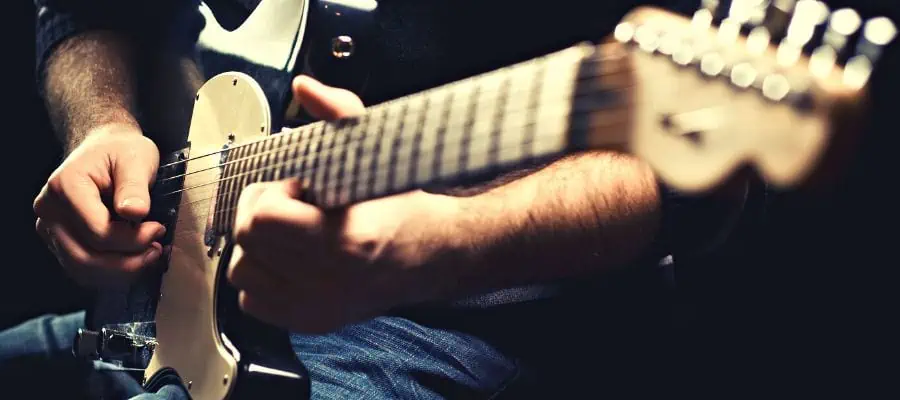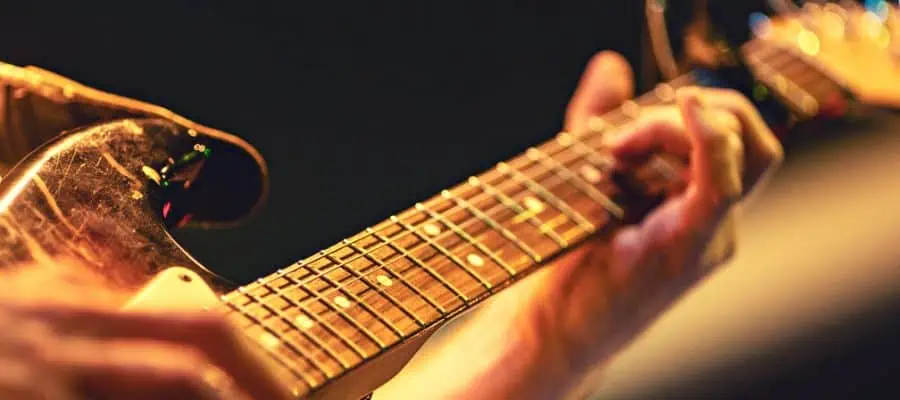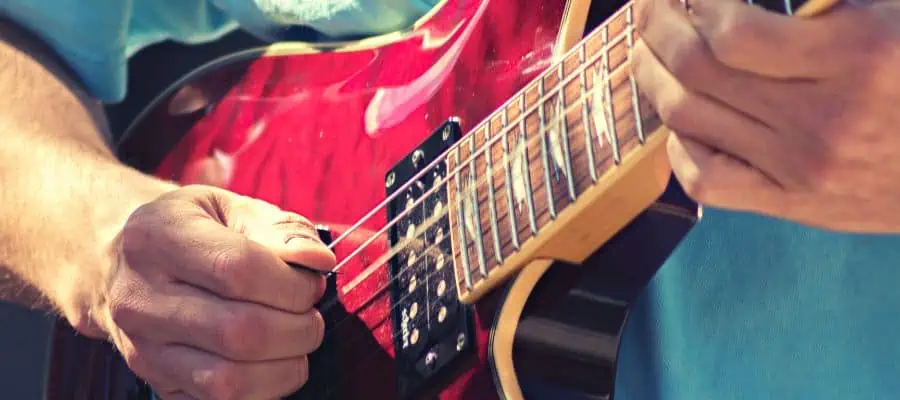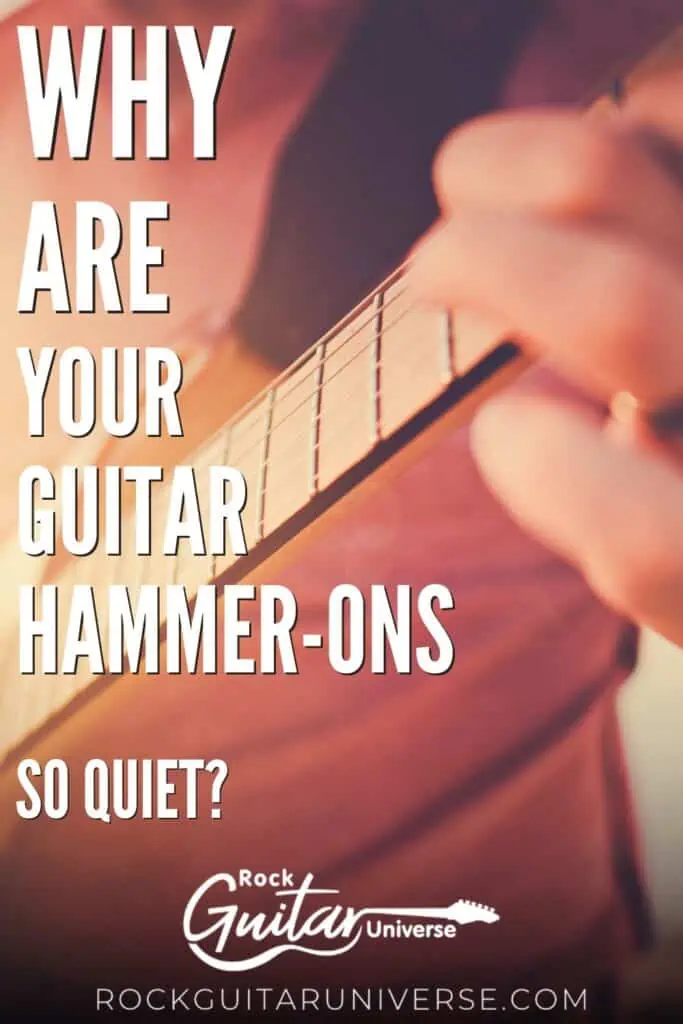Hammer-ons and pull-offs are some of the most fundamental techniques for playing guitar. By using the strength of the fretting hand, these hammer-ons and pull-offs allow guitarists to change between notes quickly and efficiently. But, many beginner guitarists find it hard to make hammer-ons and pull-offs sound properly when they first start to play the instrument.
There can be many problems behind quiet hammer-ons, including insufficient fretting strength, improper technique, inconsistent timing, and pressure, as well as poor guitar setup. Diagnosing the issue and working on fixing the technique is crucial to take your playing to the next level.
In this article, we will delve deep into these issues and some strategies to fix them. So, if you are one of these players, read on!
Understanding Hammer-On Mechanics and Technique

Hammer-on is essentially a fundamental guitar technique that allows the players to transition between notes without plucking each note individually. As the name suggests, the players pick a note before hammering down a second finger on the same string to get the sound of a second note without plucking the string again. This way, the transition between notes is easier, faster, and smoother, creating a different effect and sound than plucking each note individually.
The mechanics behind it is the vibration, as you may guess. The vibration of the first plucked note and the vibration created by the hammer-on motion allow the players to develop legato-style playing for more fluid, quicker, and smoother licks and melodies.
Making hammer-ons is initially relatively easy. Start by playing a note on your guitar, either an open note or a fretted note. Then, while the note is ringing, hammer down a higher note on the exact string with another finger of the fretting hand.
For the hammer-ons to sound properly, players should have precise finger control, coordination, and strength. The video below shows the hammer-ons with the proper technique and some exercises to get them right.

Potential Issues With Hammer-On Technique

Insufficient Fretting Hand Strength
To make the hammer-ons sound correctly, the fretting hand needs to be strong and agile enough to create the necessary vibration power. Without enough strength and agility, the hammer-on sound will be weak and muted.
Finger strength exercises like finger presses and trills can help guitarists build strength and agility. Another approach can be using finger strengthener tools.
Improper Technique
While the hammer-on technique is quite simple, it requires a level of finger dexterity and strength. The finger angle and the hammer-down motion are important to get the sound right. The hammer-down motion should be done from the joint where the finger meets the hand. And the motion should be quick to give enough velocity and power to create a loud note.
Without enough velocity or precision, you won’t be able to get a powerful sound. So, a good exercise for building the proper technique is playing the pentatonic scale slowly with hammer-ons, focusing on the technique and good sound.
Inconsistent Timing and Pressure
Another common issue with hammer-ons is the inconsistency in the timing and pressure while making hammer-ons with different fingers. Not all fingers have the same independence and strength due to human anatomy and the frequency of use in daily life. That is why making hammer-ons, for instance, between the index finger and ring finger, is much easier and smoother than making it between the middle finger and the pinky finger.
Finger independence exercises, as well as finger strength exercises, especially for the pinky finger, play a big role in maintaining consistent sounding hammer-ons.
Poor Guitar Setup
The reason your hammer-ons do not sound properly may not be related to your playing technique or strength at all. Having a poor guitar setup with buzzing strings makes it impossible to make good-sounding hammer-ons. On the other hand, if your guitar action is too high, you will need more strength to make hammer-ons, making the technique more challenging.
If you are not familiar with setting up the action of your guitar, it may be a good idea to take it to a luthier and let him set up the action. Later, you can experiment with the string height and decrease or increase the action as you prefer.
How to Improve Your Hammer-On Sound?

For building a proper hammer-on technique, finger strength, and independence exercises, experimenting with finger placement, as well as using amplification and sound effects, can help significantly.
Finger Strength and Independence Exercises
For good-sounding hammer-ons, finger strength and independence exercises are a must. Using all of your fingers on the way and building strength, dexterity, and independence will give you those great-sounding legato-style playing with a consistent sound all over the fretboard.

Experimenting With Finger Placement
While doing your exercises, you can experiment with different finger placements to see which approach works best for you the best. As we all have different anatomies and hand and finger shapes, you might find a different approach that works better for you. So, focus on the sound and the ease when playing to find the sweet spot.
Using Amplification and Sound Effects
Using amplification and sound effects will make your hammer-ons sound much better. The more gain and compression you have on your tone, the better your hammer-ons and pull-offs sound. This is because gain and compression make the amp more sensitive to weak inputs.
However, this should not be a shortcut, making you get away from your exercises. Think of amplification and sound effects as the make-up on your playing. The foundation should not be ignored to build a beautiful soundscape.
Conclusion
Mastering great-sounding hammer-ons requires finger strength, technique, and dexterity, which players can achieve with consistent practice. Potential causes of quiet hammer-ons involve insufficient strength, improper technique, bad timing, as well as poor guitar setup. All these causes can be overcome with practice and setup improvement.
If you found this article useful, you may want to save this pin below to your Guitar board.

Recent Posts
When learning new songs have you noticed that some of the chord sequences sound really good? But when you tried to come up with your own chord sequence, or as we call it chord progression, you found...
Some guitarists insist on buying an expensive amplifier with their electric guitar. They assume that this is a must for every type of guitarist out there. However, in some situations, this isn’t...

